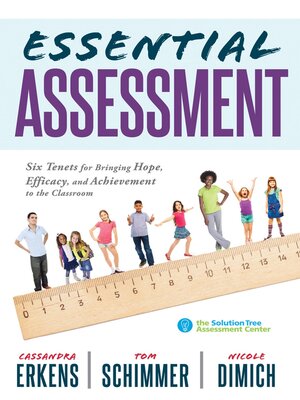Essential Assessment
ebook ∣ Six Tenets for Bringing Hope, Efficacy, and Achievement to the Classroom—deepen teachers' understanding of assessment to meet standards and generate a culture of learning
By Cassandra Erkens

Sign up to save your library
With an OverDrive account, you can save your favorite libraries for at-a-glance information about availability. Find out more about OverDrive accounts.
Find this title in Libby, the library reading app by OverDrive.



Search for a digital library with this title
Title found at these libraries:
| Library Name | Distance |
|---|---|
| Loading... |
While much research has revealed which assessment practices have the most positive impact on student achievement and instruction, out-of-date, unproductive practices, which students find disengaging and disheartening, still persist. Discover how to use the power of assessment to instill hope, efficacy, and achievement in your students. With this research-based resource, you'll explore six essential tenets of assessment—assessment purpose, communication of assessment results, accurate interpretation, assessment architecture, instructional agility, and student investment—that will help deepen your understanding of assessment to not only meet standards but also enhance students' academic success and self-fulfillment.
Benefits
Contents
Introduction
Chapter 1: Hope, Efficacy, and Achievement
Chapter 2: Assessment Purpose
Chapter 3: Communication of Assessment Results
Chapter 4: Accurate Interpretation
Chapter 5: Assessment Architecture
Chapter 6: Instructional Agility
Chapter 7: Student Investment
References
Index







